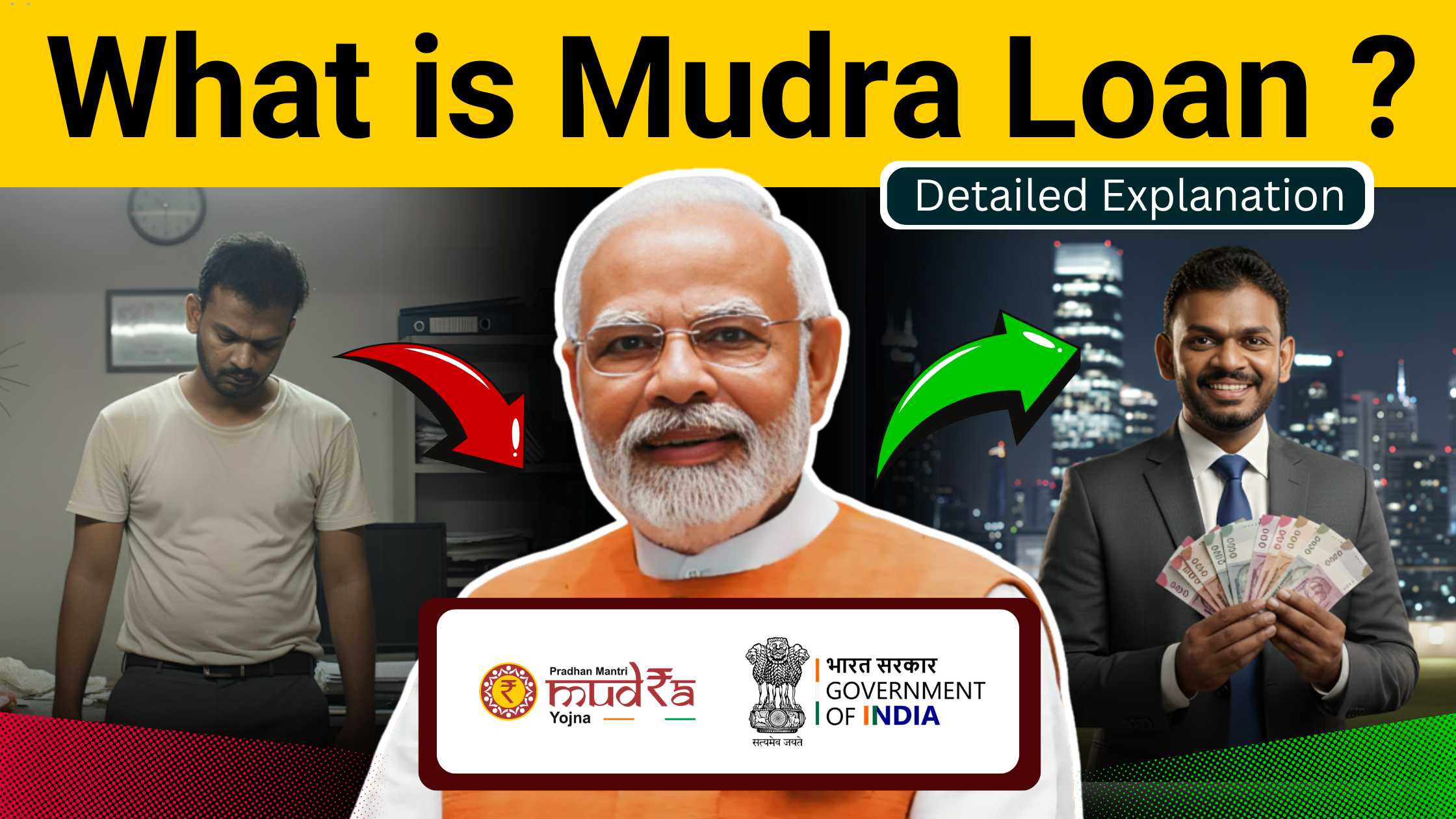Benefits of Government Personal Loans in 2025 – A Comprehensive Guide
Government Personal Loans : In 2025, access to credit is crucial for individuals looking to meet urgent financial needs, fund personal aspirations, or manage life’s unexpected turns. Government personal loans are emerging as one of the most reliable, affordable, and secure financing options available to Indian citizens. Offered by public sector banks, government-backed financial institutions, and specialized lending schemes, these loans combine low interest rates, flexible repayment, and minimum documentation—making them ideal for salaried individuals, self-employed professionals, and economically weaker sections.
Table of Contents
In this comprehensive guide, we will explore the various advantages of government personal loans in 2025, eligibility criteria, popular schemes, application process, and tips to maximize the benefits. Whether you’re planning a wedding, consolidating debt, or facing a medical emergency, this article will help you understand why choosing a government loan over a private lender can be a financially wise decision.
Understanding Government Personal Loans

What Are Government Personal Loans?
Government personal loans are unsecured credit facilities offered by:
- Public sector banks (like SBI, Bank of Baroda, Union Bank of India)
- Government lending agencies (like SIDBI, MUDRA, PMEGP)
- Specialized schemes under central or state governments (PM Swanidhi, Stand-Up India, JanSamarth)
These loans are generally backed by government policies or regulatory support from RBI, NABARD, or ministries like MSME and Finance. They are designed to serve citizens with varied profiles—government employees, rural entrepreneurs, students, farmers, or women borrowers.
Top Benefits of Government Personal Loans in 2025
1. Lower Interest Rates Compared to Private Lenders
One of the most attractive features of government-backed personal loans is the lower interest rate. While private banks may charge 11%–24% per annum, government lenders offer rates starting from 8.5%, thanks to subsidies, RBI support, and low-cost capital reserves.
Popular Examples:
- SBI Xpress Credit: 10.40% p.a.
- BOI Star Personal Loan: 9.75% p.a.
- Union Personal Loan Scheme: From 10.90% p.a.
For government employees, pensioners, or women applicants, rates are even more favorable.
2. Flexible Eligibility and Relaxed Credit Norms
Government loans are more inclusive, especially for applicants with:
- Low income
- Limited credit history
- Belonging to rural/underprivileged backgrounds
- First-time borrowers
Schemes like MUDRA Loans, PM Swanidhi, or Stand-Up India provide loans with minimal paperwork, often without a strict CIBIL requirement.
3. No Collateral or Guarantor Needed
Most personal loans under government programs are unsecured, meaning you don’t need to pledge property, gold, or any asset. This is especially beneficial for low-income families or first-time borrowers.
Schemes such as:
- PM MUDRA Loan (Shishu Category) up to ₹50,000
- SIDBI Stand-Up India Loans
- State Govt Schemes for Women SHGs
These offer loans without collateral while ensuring access to credit for priority sectors.
4. Longer Repayment Tenure and Lower EMIs
Government personal loans offer repayment tenures of up to 7 years, helping borrowers reduce EMI pressure and maintain better cash flow. Many schemes offer flexible EMI structures based on income and financial capacity.
Read more : How to Choose the Right Personal Loan? – A Comprehensive Guide 2025
E.g., SBI’s personal loan tenure can go up to 72 months for salaried customers. PMEGP and NSCFDC loans offer grace periods before EMI starts.
5. Special Subsidies and Interest Subvention
Certain categories of borrowers, such as farmers, SC/ST applicants, women entrepreneurs, or senior citizens, may be eligible for:
- Interest subsidies up to 3%–6%
- Capital subsidies for machinery/equipment
- Subvention for timely repayment
This reduces the net borrowing cost significantly.
Examples:
- Kisan Credit Card (KCC) – 4% effective rate after subsidy
- PMEGP – 15–35% capital subsidy based on category
6. Transparent Terms and RBI-Regulated Practices
Public sector banks operate under RBI supervision, ensuring:
- No hidden charges
- Transparent processing fees
- Regulated foreclosure charges
- Quick grievance redressal
Compared to private fintech lenders who often have aggressive collection methods, government loans ensure consumer protection through regulation and accountability.
7. Support for Multiple Needs
Unlike specialized loans (like education or home loans), government personal loans are multipurpose, covering:
- Medical emergencies
- Travel or wedding expenses
- Business capital
- Debt consolidation
- Educational support
- Housing repairs
For example, the SBI Saral Personal Loan and Bank of Maharashtra Maha Bank Loan can be used flexibly with no usage restriction.
8. Availability in Rural and Semi-Urban Areas
Thanks to the wide network of public banks and regional rural banks, government loans reach Tier 2 and Tier 3 towns, unlike private NBFCs that are metro-focused.
Initiatives like Digital Seva Kendras, Jan Dhan Yojana, and Common Service Centres (CSCs) have further improved accessibility to personal finance for the underserved population.
Government Personal Loan Schemes in 2025 – Top Programs

1. MUDRA Yojana
Under the Pradhan Mantri MUDRA Yojana (PMMY), three types of personal loans are offered to small borrowers:
- Shishu (up to ₹50,000)
- Kishore (₹50,000 to ₹5 lakh)
- Tarun (₹5 lakh to ₹10 lakh)
Interest rates: From 8.5% p.a.
Collateral: Not required
Target: Micro-entrepreneurs, street vendors, small traders
2. Stand-Up India
For SC/ST and women entrepreneurs launching businesses:
- Loan range: ₹10 lakh – ₹1 crore
- Purpose: Greenfield business, services, or manufacturing
- Collateral: May be waived with CGTMSE cover
- Bank: All scheduled commercial banks
3. PM Swanidhi
Loan scheme for urban street vendors:
- Amount: Up to ₹50,000 in 3 stages
- Interest subsidy: 7% on timely repayment
- Tenure: 1 year – renewable
- Purpose: Working capital
4. SBI Xpress Credit Loan
For salaried individuals:
- Loan: Up to ₹20 lakh
- Tenure: 6 years
- No security, low processing fees
- Rate: Starts from 10.40% p.a.
5. CGTMSE (Credit Guarantee Trust Fund for Micro and Small Enterprises)
This scheme covers collateral-free loans to MSMEs from ₹10 lakh to ₹2 crore. Personal borrowers who are starting a micro business can apply through banks under this cover.
Buy Now : Beginner to Advanced Option Trading Strategy
6. Personal Loan for Pensioners (SBI/PNB/BOI)
For Central/State government pensioners:
- Loan up to ₹14 lakh
- Tenure up to 84 months
- EMI deduction from pension account
- Special low-interest rate for senior citizens
Eligibility Criteria for Government Personal Loans
Though different schemes have unique requirements, most government loans in 2025 follow these general criteria:
- Age: 18–60 years (varies by scheme)
- Nationality: Indian citizen or resident
- Income: ₹10,000/month or more (self or salaried)
- Occupation: Salaried, self-employed, pensioner, SHG member
- Credit score: Not mandatory for most govt-backed loans
- Purpose: Should not be speculative or illegal
Schemes like MUDRA, PM Swanidhi, and CGTMSE allow loans without credit history or salary slips if the borrower has a viable business plan or government registration (like UDYAM or vendor card).
Application Process for Government Personal Loans

Step-by-Step Guide
- Choose the Loan Scheme
Identify the best-suited loan—whether through a bank (e.g., SBI, BOB) or scheme (MUDRA, PMEGP). - Visit Bank or Apply Online
Use platforms like:- www.jansamarth.in
- Bank websites (SBI, Union Bank, etc.)
- Physical bank branches or CSCs
- Submit Documents
Typical requirements include:- Aadhaar & PAN
- Income proof or business proof
- Bank statements
- Passport-size photo
- Address proof
- Loan Processing & Approval
Once documents are verified and eligibility is confirmed, the bank will process and disburse the loan, usually within 7–15 days. - Track & Manage Loan
Borrowers can monitor repayment and EMI via net banking, mobile apps, or passbook updates.
Comparison: Government vs Private Personal Loans
| Feature | Government Loan | Private Loan |
|---|---|---|
| Interest Rate | 8.5% – 12% | 11% – 24% |
| Collateral | Usually Not Required | Sometimes Required |
| Processing Fee | Low or Nil | 1% – 3% of loan |
| Regulation | RBI & Govt Oversight | Semi-regulated |
| Accessibility | Widely available | Limited in rural areas |
| Customer Protection | High | Varies |
Who Should Choose Government Personal Loans?
Ideal for:
- Low or middle-income salaried individuals
- Small business owners and vendors
- Women and SC/ST entrepreneurs
- First-time borrowers
- Senior citizens and pensioners
If you prioritize affordability, transparency, and stability, government loans are the most suitable path in 2025.
Tips to Maximize Benefits
- Always repay on time to benefit from interest subsidies
- Use JanSamarth portal to compare multiple schemes
- Apply for credit-linked government grants if available
- Consider combining loan with schemes like Digital India or Startup India for added support
- Consult with bank managers for best available schemes based on your profile
Conclusion

In 2025, government personal loans remain one of the safest and most affordable financial tools for individuals and small businesses alike. With lower interest rates, collateral-free access, longer tenures, and increasing digital accessibility, these loans empower diverse categories of Indian citizens—from salaried employees and entrepreneurs to street vendors and pensioners.
Buy Now : Beginner to Advanced Option Trading Strategy
Whether you’re navigating a short-term cash crunch or funding a long-term personal goal, government personal loans offer financial inclusion with dignity. Take time to explore the right scheme, apply smartly, and build your financial future with the solid backing of India’s most trusted public financial institutions.
Disclaimer : This article is for informational purposes only. Interest rates, eligibility, and policies may vary by bank or scheme. Please consult with the respective financial institution or visit https://jansamarth.in for updated information. The content was created based on research from public sources and government portals. The author is not affiliated with any bank or government authority. Readers are advised to do their own due diligence before making any financial decisions.



